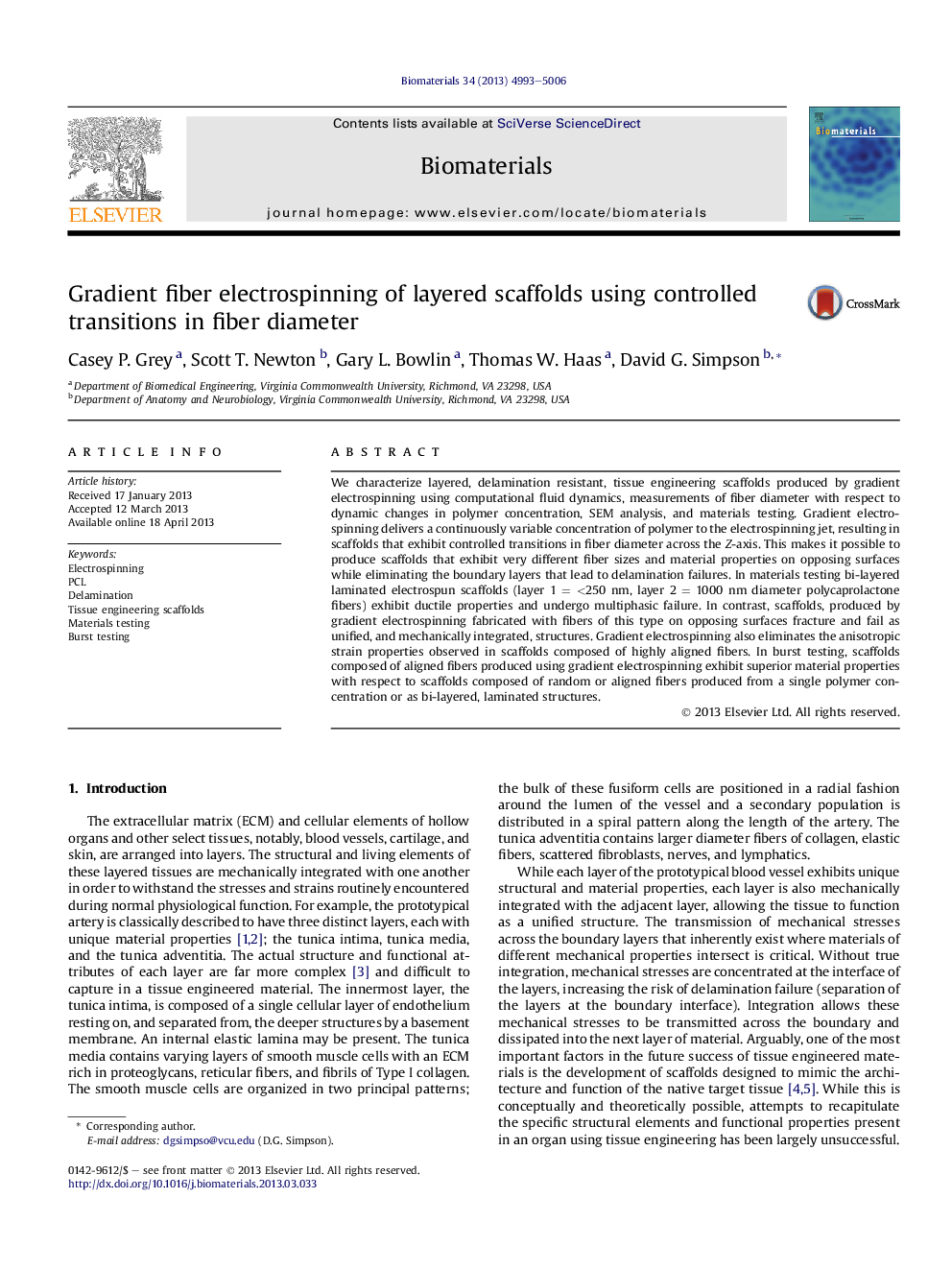| Article ID | Journal | Published Year | Pages | File Type |
|---|---|---|---|---|
| 10228971 | Biomaterials | 2013 | 14 Pages |
Abstract
We characterize layered, delamination resistant, tissue engineering scaffolds produced by gradient electrospinning using computational fluid dynamics, measurements of fiber diameter with respect to dynamic changes in polymer concentration, SEM analysis, and materials testing. Gradient electrospinning delivers a continuously variable concentration of polymer to the electrospinning jet, resulting in scaffolds that exhibit controlled transitions in fiber diameter across the Z-axis. This makes it possible to produce scaffolds that exhibit very different fiber sizes and material properties on opposing surfaces while eliminating the boundary layers that lead to delamination failures. In materials testing bi-layered laminated electrospun scaffolds (layer 1Â =Â <250Â nm, layer 2Â =Â 1000Â nm diameter polycaprolactone fibers) exhibit ductile properties and undergo multiphasic failure. In contrast, scaffolds, produced by gradient electrospinning fabricated with fibers of this type on opposing surfaces fracture and fail as unified, and mechanically integrated, structures. Gradient electrospinning also eliminates the anisotropic strain properties observed in scaffolds composed of highly aligned fibers. In burst testing, scaffolds composed of aligned fibers produced using gradient electrospinning exhibit superior material properties with respect to scaffolds composed of random or aligned fibers produced from a single polymer concentration or as bi-layered, laminated structures.
Related Topics
Physical Sciences and Engineering
Chemical Engineering
Bioengineering
Authors
Casey P. Grey, Scott T. Newton, Gary L. Bowlin, Thomas W. Haas, David G. Simpson,
